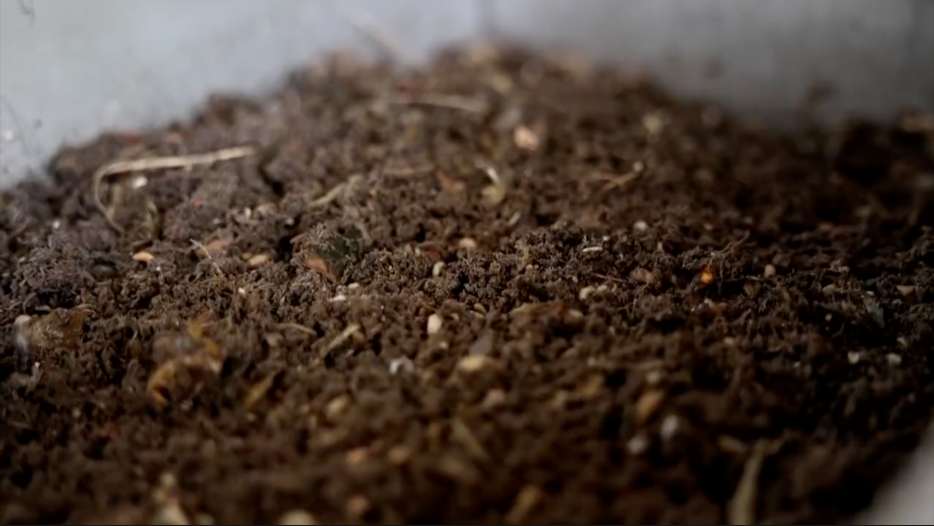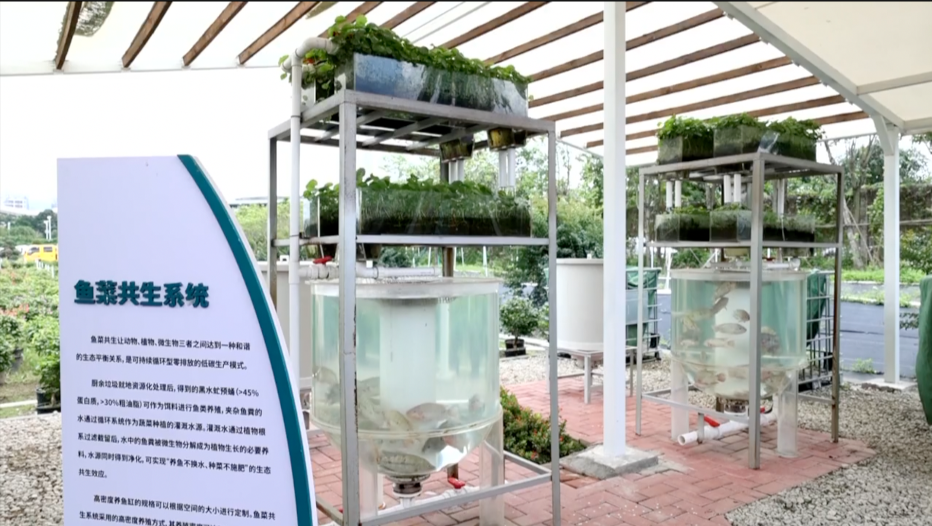The larvae of hermetia illucens, commonly known as black soldier fly, have become experts in managing food waste. They can consume waste that weighs 10,000 times more than themselves, researchers at a pilot station for food waste disposal in Zhuhai City, south China's Guangdong Province have found.
The food waste is shredded and coated with sawdust after being sent to the disposal station. Then, the larvae enter their dining room and keep eating. In just seven days, these tiny insects can transform from eggs of about 1 millimeter to adults of 2 centimeters in length, increasing size by 4,000 times, and eating kitchen waste 10,000 times heavier than themselves.

The larvae of hermetia illucens eat the shredded food waste. /CCTV
The larvae of hermetia illucens eat the shredded food waste. /CCTV
It is estimated that the larvae hatched from 1 gram of the eggs of black soldier fly can handle about 10 kilograms of food waste, producing about 1.5 to 2 kilograms of adult insects and 2 to 4 kilograms of organic manure.
Consuming five tonnes of food waste can produce one tonne of insects and about two tonnes of worm-assisted compost, realizing zero carbon emissions, according to Zhang Jibin, a professor at the Huazhong Agricultural University.

The base has also explored an "aquaponics system" to realize the green recycling of garbage. Aquaponics is a food production system that involves the cultivation of fish and plants together in a constructed, recirculating ecosystem utilizing natural bacterial cycles to convert fish waste to plant nutrition.
After the organic waste is transported to the base, it is eaten by the fly's larvae that are fed to the fish after seven days. After feeding the fish, the water is pumped by a device and can be put on the roots of the plants. The clean water will filter from the plant's roots into the fish tank so that it can be recycled.
(If you want to contribute and have specific expertise, please contact us at nature@cgtn.com.)